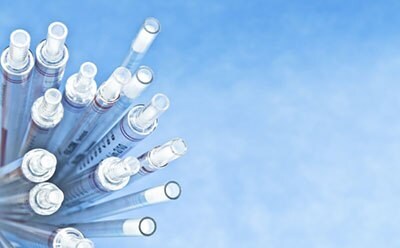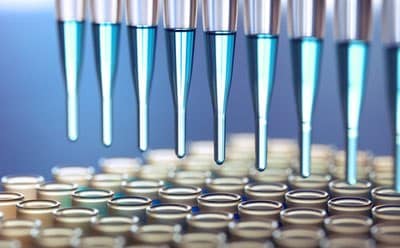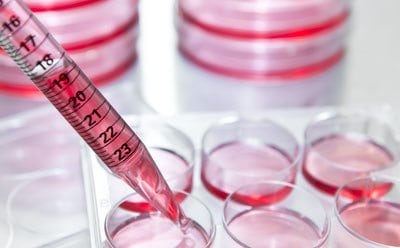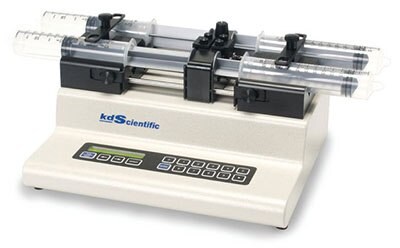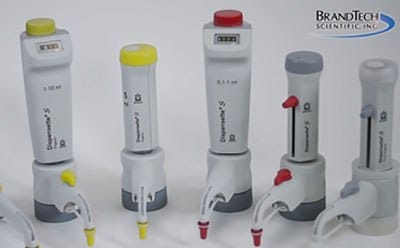Liquid Handling & Dispensing
We offer a variety of pipette tips and pipettors for small volume liquid dispensing from leading brands including Eppendorf® Combitips Advanced® and ep Dualfilter T.I.P.S.®, Corning® DeckWorks™, Lambda® and Isotip®, ART® barrier tips and SoftFit L Reload System™, and BRAND®Transferpette®, HandyStep®, Transferpettor, and PD-Tips. For the quality assurance you need for molecular biology and cell culture, Corning® Costar® Stripette® or KIMAX® 51 serological pipettes are hard to beat. Coupled with the MilliSentials™ aliquoting pipette controller, Eppendorf® Easypet®, or BRAND® accu-jet® S pipette controller, you have a winning combination. For titrations and analytical chemistry techniques, the BRAND® BLAUBRAND® ETERNA volumetric pipettes are supplied with original batch certifications. With the addition of bottle-top dispensers such as BRAND® Dispensette® S and seripettor® pro, the dual syringe diluter Microlab® 625 from Hamilton®, and KDS Legato™ syringe pumps, we have a comprehensive portfolio for general lab applications to meet your laboratory needs.
Products
Popular Filters
Products
Pipettors
Pipette devices are used with pipette tips to aspirate and dispense fixed volumes of liquids.
- Manual pipettes depend on air displacement to deliver a measured volume of liquid.
- Electronic pipettes minimize the possible development of musculoskeletal disorders due to repetitive pipetting, and commonly replace the mechanical version.
- Positive displacement pipettes are used for volatile or viscous substances at small volumes such as DNA. These require a disposable microsyringe tip composed of a capillary and a piston that directly displaces the liquid. Positive displacement is ideal for pipetting high viscous or foaming liquids, or liquids with high density or vapor pressure.
- Repeat pipettes allow repeat dispensing of the same volume of liquid into multiple tubes or wells without the need to aspirate more liquid between each step.
- Multi-channel pipettes hold multiple tips for pipetting into multi-well plates using a single device.
Pipette Tips
Pipette tips are disposable attachments for aspirating and dispensing measured volumes of liquids using a micropipette. Pipette tip selection depends on various factors:
- Volume capacity: Tips are designed to accurately deliver volumes within specified ranges when used in conjunction with a specific pipette device. The volume capacity of the tip must match the volume capacity of the pipette device for accurate dispensing.
- Material: Pipette tips are typically made of clear, disposable polypropylene to allow for easy view of contents. Glass pipette tips can be used in applications where harsh chemicals are dispensed.
- Dimensions: Some pipette tips are elongated for gel loading, microcapillary filling, PCR, and pipetting from long neck bottles. Wide bore pipette tips have larger tip openings that allow transfer of viscous liquids, genomic DNA, and fragile cell lines. The pipette tip should have appropriate dimensions to form a seal to the barrel of the pipette device.
- Sterility: Tips are supplied sterile or non-sterile depending on assay needs. Cell culture applications generally require the use of sterile pipette tips.
- Treatment: Tips should be DNase-, RNase-, and pyrogen-free. Some liquid handling applications require special pipette tips with coatings or treatments for low protein binding or retention.
- Filter and barrier tips: Filtered pipette tips contain filters near their attachment point to prevent contamination of the pipette device and cross-contamination between dispenses, and are recommended when working with nucleic acids, pathogenic agents, or radioisotopes. Tip barriers prevent liquids from entering the pipette device. Several filter and barrier tips are available for contamination control.
- Compatibility: Universal tips are compatible with most standard pipettes. Some pipettes have unusual barrel geometries and may require specific tips. Certain pipette tips are made of rigid plastics that may render them incompatible with some pipette devices. Positive displacement pipettors require special tips that integrate a capillary and piston for pipetting viscous liquids.
Pipet Controllers and Bulbs
Pipettors and pipet controllers are used to draw liquid into serological and aspirating pipets for measurement and dispensing.
- Mechanical pipettors use air displacement to deliver a measured volume of liquid.
- Electronic pipettors (also termed pipet controllers) are more ergonomic and minimize the possible development of injuries due to repetitive pipetting.
- Positive displacement pipettors are used for pipetting high viscous or foaming liquids, or liquids with high density or vapor pressure.
Pipets
Pipets are graduated glass or plastic tubes used in serology, cell culture, and chemistry to measure precise volumes of liquid. They rely on the use of a pipet dispenser such as a bulb, pipettor, or pipet controller to draw up liquid for measurement and dispensing. Glass pipets may be reusable, provide high accuracy measurement, and are compatible with harsher solvents. Plastic pipets avoid the problem of glass breakage and are available in polystyrene (combining high measurement accuracy with the convenience of plastic) and polyethylene and polypropylene for broader chemical resistance.
- Serological pipets are glass or plastic pipets commonly used to measure and dispense milliliter amounts of liquid. They typically have graduations for accurately measuring meniscus levels and are available sterile for aseptic cell culturing procedures or non-sterile for general lab dispensing. Cotton plug options are available to prevent overfilling and contamination. Large tip pipets are available for pipetting viscous liquids and suspensions.
- Pasteur pipettes (also classified as Transfer pipets) have an integrated bulb (similar to an eye dropper) and are designed for transferring small volumes of liquid. These pipets can be made of glass, polystyrene, or polypropylene. Pasteur pipettes and transfer pipets are available ungraduated or graduated for liquid measurement.
- Aspirating pipets are used to remove or aspirate liquids from vessels without measuring the volume. They are typically ungraduated, sized for capacity only, and available plugged or unplugged, sterile or nonsterile, and made from plastic or glass.
- Volumetric pipets are calibrated to measure a fixed amount of liquid with high accuracy. The pipet has a wider reservoir between two elongated sections and a single graduation mark to draw an exact volume. They are commonly used in analytical chemistry to make laboratory solutions from a base stock as well as to prepare solutions for titration.
Bottle-top dispensers
Bottle-top dispensers are liquid measuring devices that attach to the top of the bottles to allow safe and reproducible liquid distribution without contamination. Bottle-top dispensers should be selected based on top diameter, material (to ensure chemical compatibility), and dispensing volume range.
Related Resources
- Flyer: Eppendorf® Product Expansion with Merck
Researchers want to find and use the best products for their research. In order to accommodate the breadth of products available in the market today, Merck has expanded its partnership with Eppendorf to offer a more comprehensive selection of liquid, sample, and cell handling instruments and consumables to better equip you with the tools necessary to advance your research.
- Brochure: Corning® DeckWorks™ Pipet Tips
Corning DeckWorks pipet tip system is designed to allow you to maximize storage space and help reduce the production and waste of plastic materials. Both the hinged racks and reload decks within this system are manufactured with recycled plastic.
- Brochure: Eppendorf Pipette Holder System
Protect your precious liquid handling device from possible damage, contamination or chemicals spilled on the bench. The stands for single instruments have a robust design and securely hold one manual or electronic device
- Protocol: Dispensette® Testing Instructions (SOP)
This article provides testing instructions for BRAND Dispensette® S bottle-top liquid dispenser according to the standard ISO DIS 8655.
To continue reading please sign in or create an account.
Don't Have An Account?